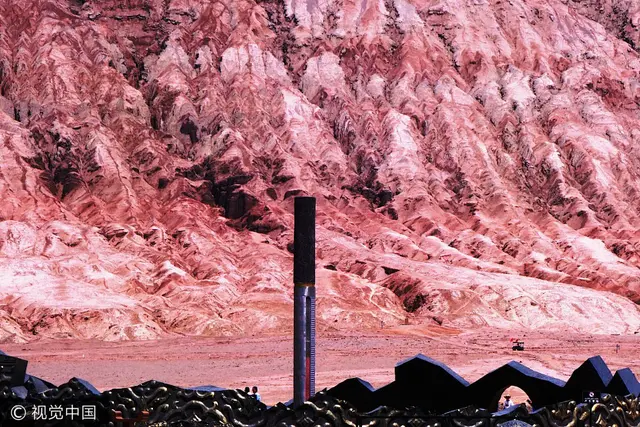During the trek approaching the mountain, visitors will find the soles of their shoes soften in the intense heat. With the hot sun overhead, the red mountain looks like a fiery dragon. [Photo/VCG]
The Flaming Mountains are barren, eroded, red sandstone hills in Tianshan Mountain range, Xinjiang Uygur autonomous region, China.
They lie near the northern rim of the Taklamakan Desert and east of the city of Turpan.
Their striking gullies and trenches caused by erosion of the red sandstone bedrock give the mountains a flaming appearance at certain times of the day.
The Flaming Mountains were formed by tectonic plate movements on the earth's surface at the same time as the Himalayas were taking shape 50 million years ago. The spontaneous combustion of the underground coal seam makes this area hot. [Photo/VCG]
The best time to visit is from June to October. August is the best month as it is harvest time for local fruits, especially grapes. August is the harvest time for local fruits, especially grapes. [Photo/VCG]
Acamel stands still in front of the Flaming Mountains. [Photo/VCG]
The Flaming Mountains got their name from a fantasy account of a Buddhist monk, accompanied by a Monkey King with magical powers. [Photo/VCG]
The monk ran into a wall of flames on his pilgrimage to India in the popular 16th century novel, Journey to the West , by Ming Dynasty (1368-1644) writer, Wu Cheng'en. [Photo/VCG]
The mountains climate is harsh, and the extremely high summer temperatures make this the hottest spot in China, frequently reaching 50 degree Celsius or higher. [Photo/VCG]
A car rides smoothly along the road. [Photo/VCG]
 简体中文
简体中文

